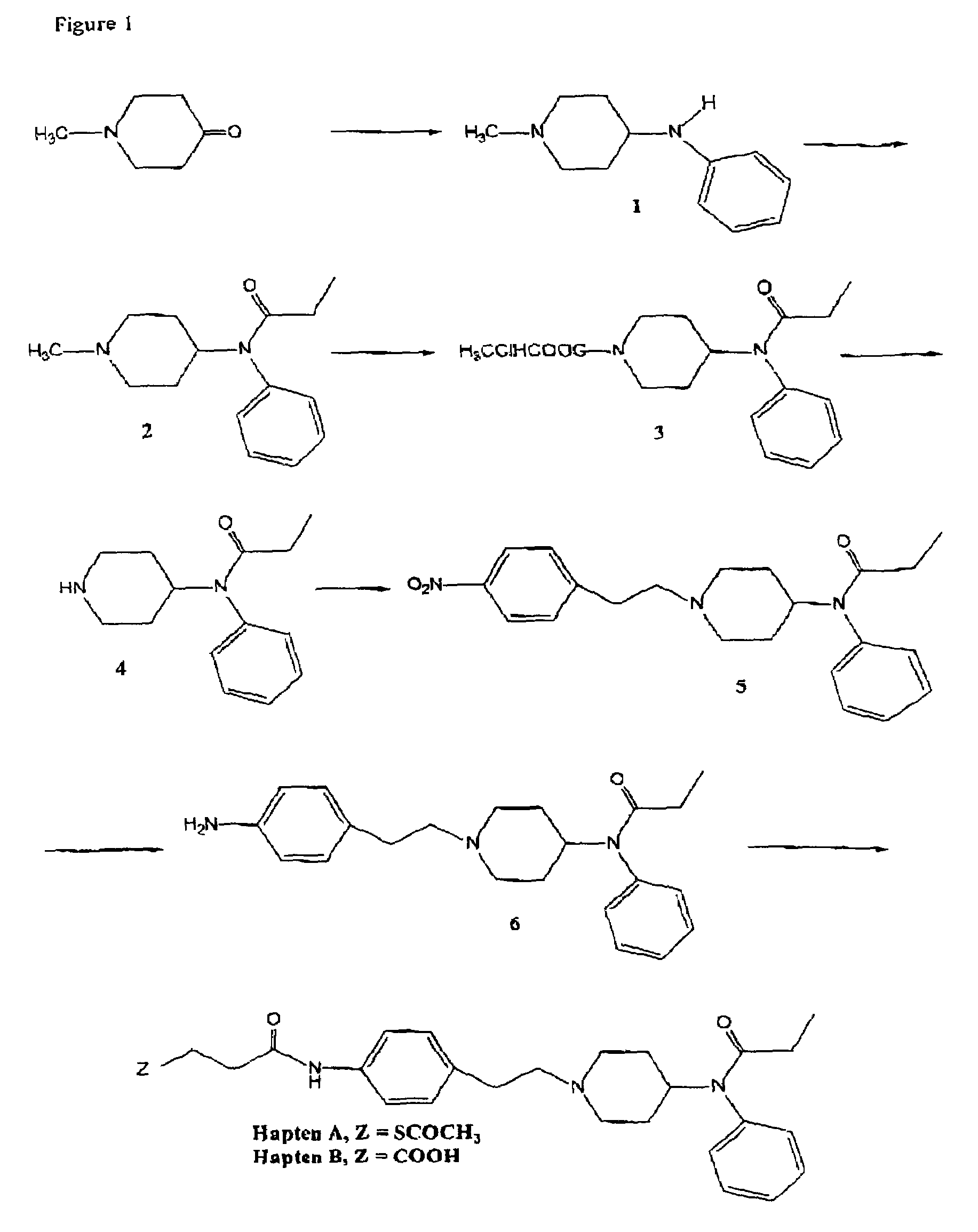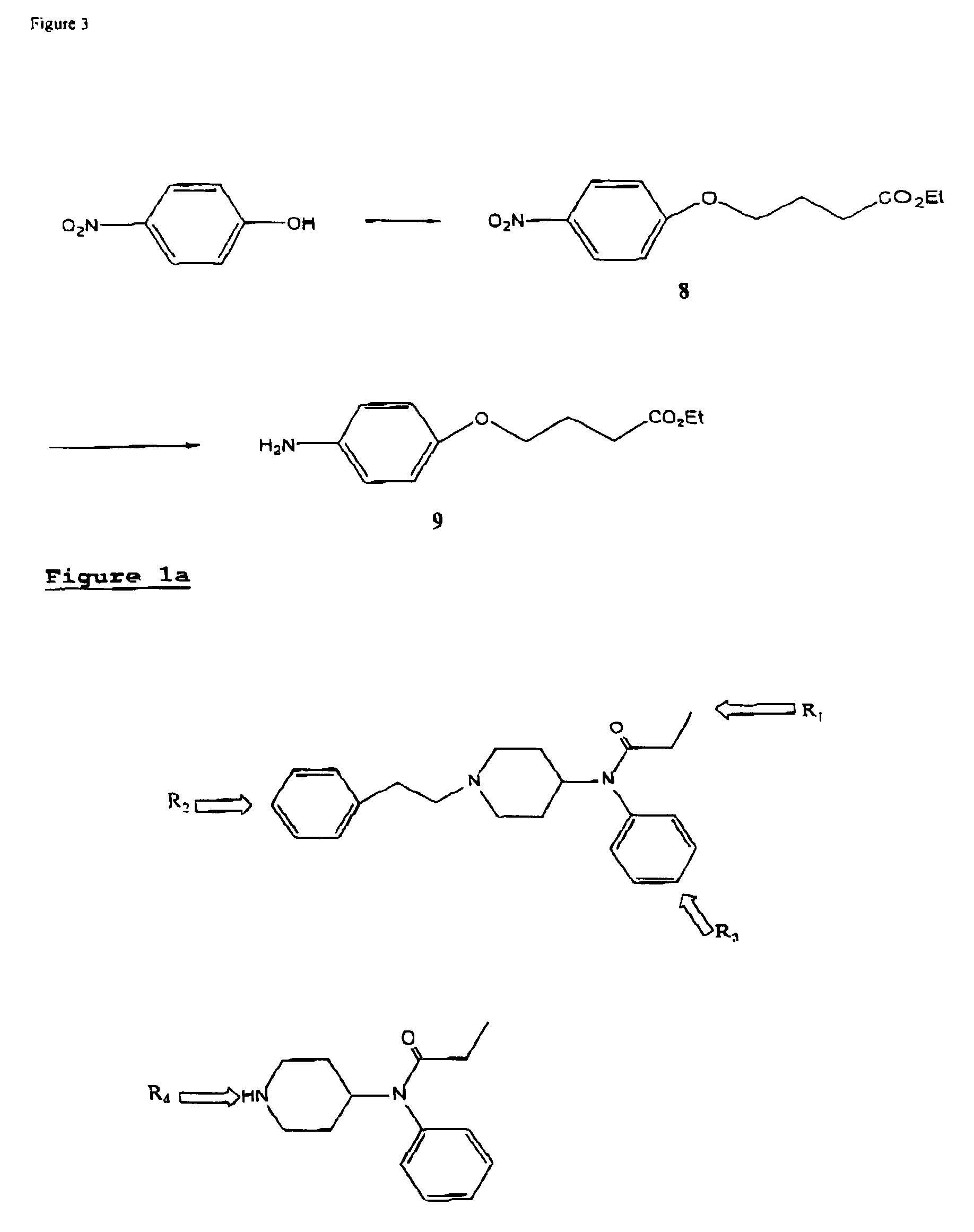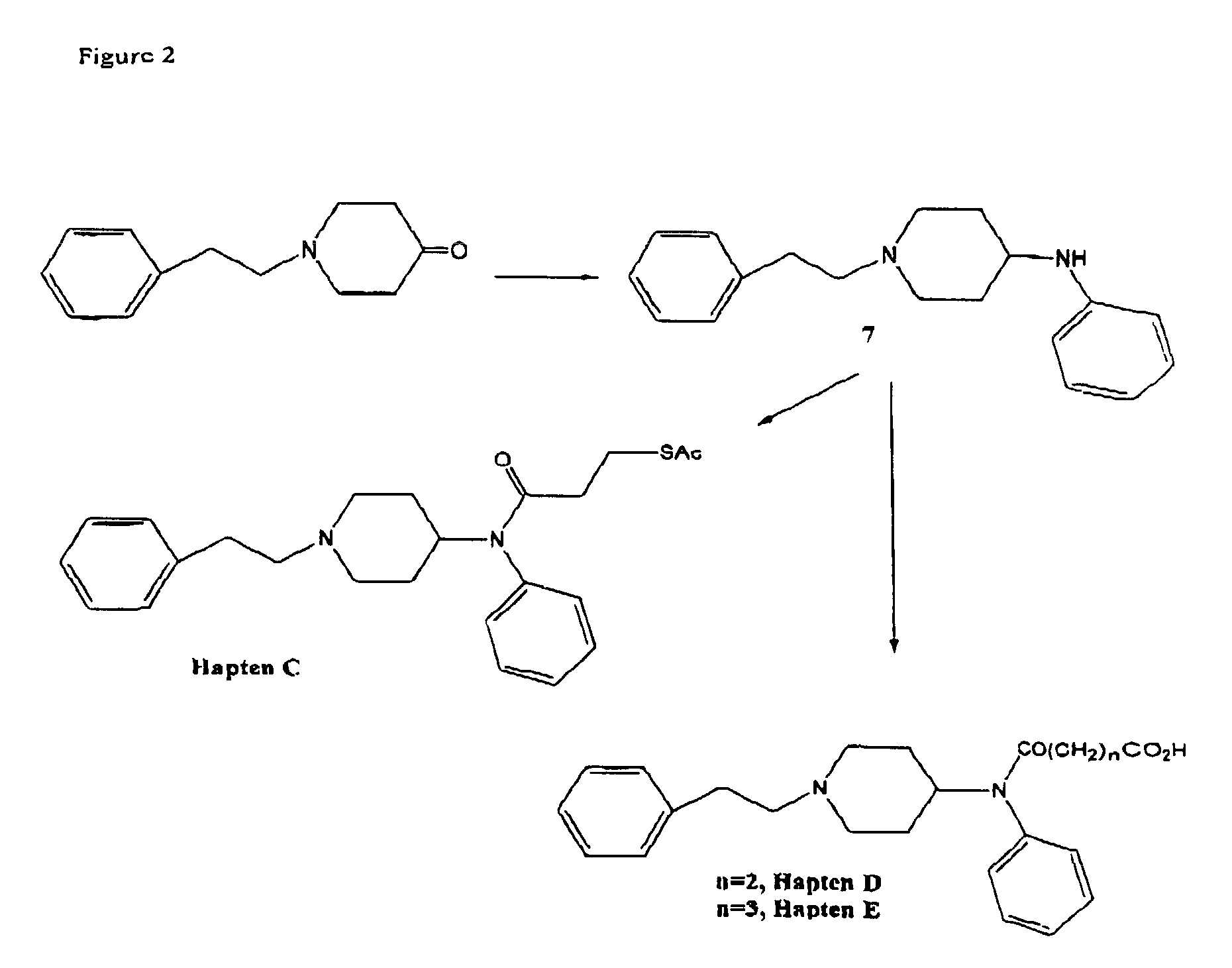Method and kit for detecting, or determining the quantity of, metabolites of fentanyl and metabolites of fentanyl analogs
a technology of metabolites and kits, applied in the field of methods and kits for detecting, or determining the quantity of, metabolites of fentanyl and metabolites of fentanyl analogs, can solve the problems of conjugates raised against carboxyfentanyl, abuse potential of fentanyl and its analogs, and inability to detect and detect abuse potential
- Summary
- Abstract
- Description
- Claims
- Application Information
AI Technical Summary
Benefits of technology
Problems solved by technology
Method used
Image
Examples
example 1
Preparation of N-(1-methyl)-4-(phenylamine)piperidine (Compound 1)
[0101]To a solution of 4-N-methyl-1-piperidone (7 g, 0.0062 mol) in 100 ml of anhydrous 1,2-dichloroethane, was added aniline (12.7 g, 0.14 mol) and acetic acid (4 ml), followed by sodium triacetoxyborohydride (13.1 g, 0.062 mol). The mixture was stirred at room temperature under nitrogen overnight.
[0102]After evaporation of the solvent under reduced pressure, water (100 ml) was added and the solution was made alkaline by adding NaOH (1N), to pH 9. The solution was then extracted using toluene (2×100 ml), the organic layers combined and washed with water (150 ml), brine (50 ml), dried over sodium sulfate, filtered and concentrated under reduced pressure. The residue was chromatographed (silica gel, 5% MeOH / chloroform) to give 9.4 g (80% yield) of compound 1 as a white solid after recrystallization from ethyl acetate.
example 2
Preparation of N-(1-methyl-4-piperidinyl)-N-phenylpropionamide (Compound 2)
[0103]To a solution of compound 1 of Example 1 (9.0 g, 0.047 mol) in anhydrous toluene (150 ml), was added propionic anhydride (15.4 g, 0.118 mol). The mixture was stirred overnight at reflux. The solvents were removed in vacuo and the residue recrystallized from ethyl acetate / hexane to give 10 g of compound 2 as a white solid (86% yield).
example 3
Preparation of N-[1-(1′-ethylchloroformate)-4-piperidinyl]-N-phenylpropionamide (Compound 3)
[0104]10 g (0.04 mol) of compound 2 of Example 2 was dissolved in anhydrous 1,2-dichloroethane (100 ml), under a nitrogen atmosphere, and cooled to 0° C. in an ice-bath. To this solution was added, dropwise, 1-chloroethyl chloroformate (6.6 g, 0.046 mol) and the solution heated at reflux for 2 hours (thin layer chromatography indicated when reaction was complete). The solution was cooled to room temperature and the solvents removed under reduced pressure. The viscous oily residue was purified by column chromatography (silica gel, 10% ethyl acetate / 90% n-hexane) to give the title compound as a white amorphous solid (10 g, 74% yield).
PUM
| Property | Measurement | Unit |
|---|---|---|
| pH | aaaaa | aaaaa |
| temperature | aaaaa | aaaaa |
| pH | aaaaa | aaaaa |
Abstract
Description
Claims
Application Information
 Login to View More
Login to View More - R&D
- Intellectual Property
- Life Sciences
- Materials
- Tech Scout
- Unparalleled Data Quality
- Higher Quality Content
- 60% Fewer Hallucinations
Browse by: Latest US Patents, China's latest patents, Technical Efficacy Thesaurus, Application Domain, Technology Topic, Popular Technical Reports.
© 2025 PatSnap. All rights reserved.Legal|Privacy policy|Modern Slavery Act Transparency Statement|Sitemap|About US| Contact US: help@patsnap.com



